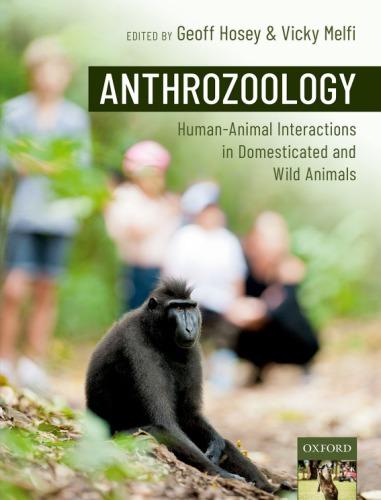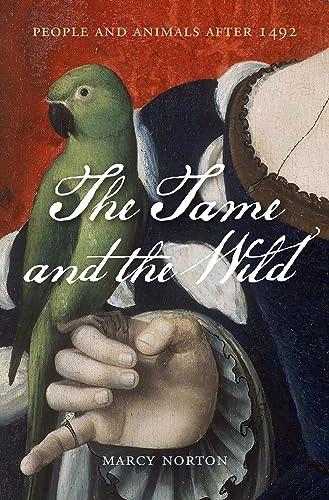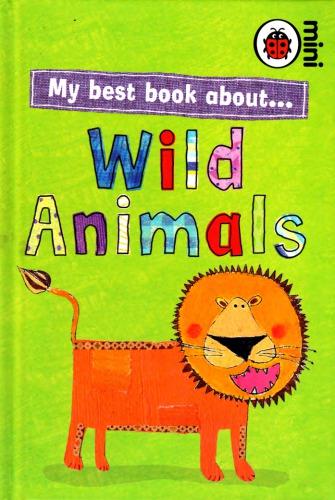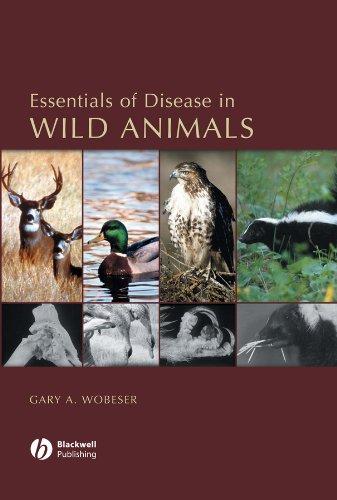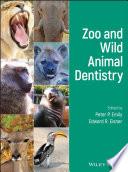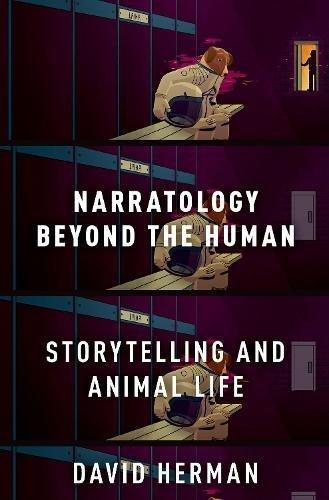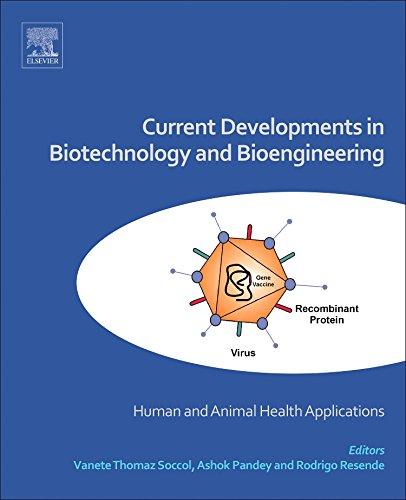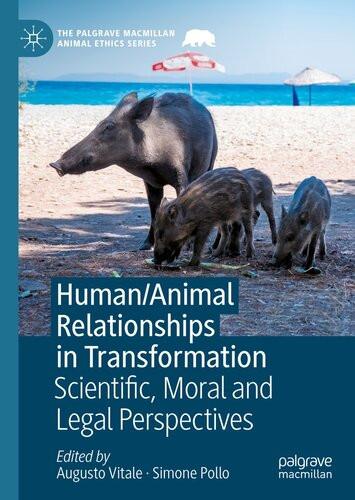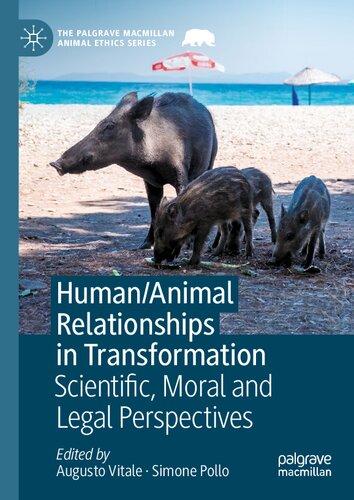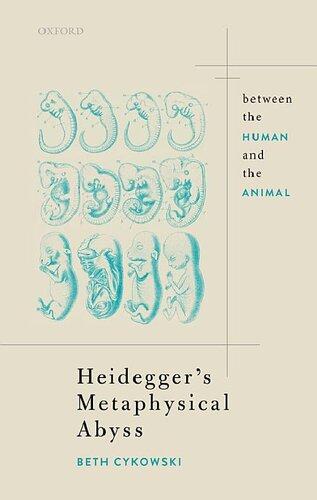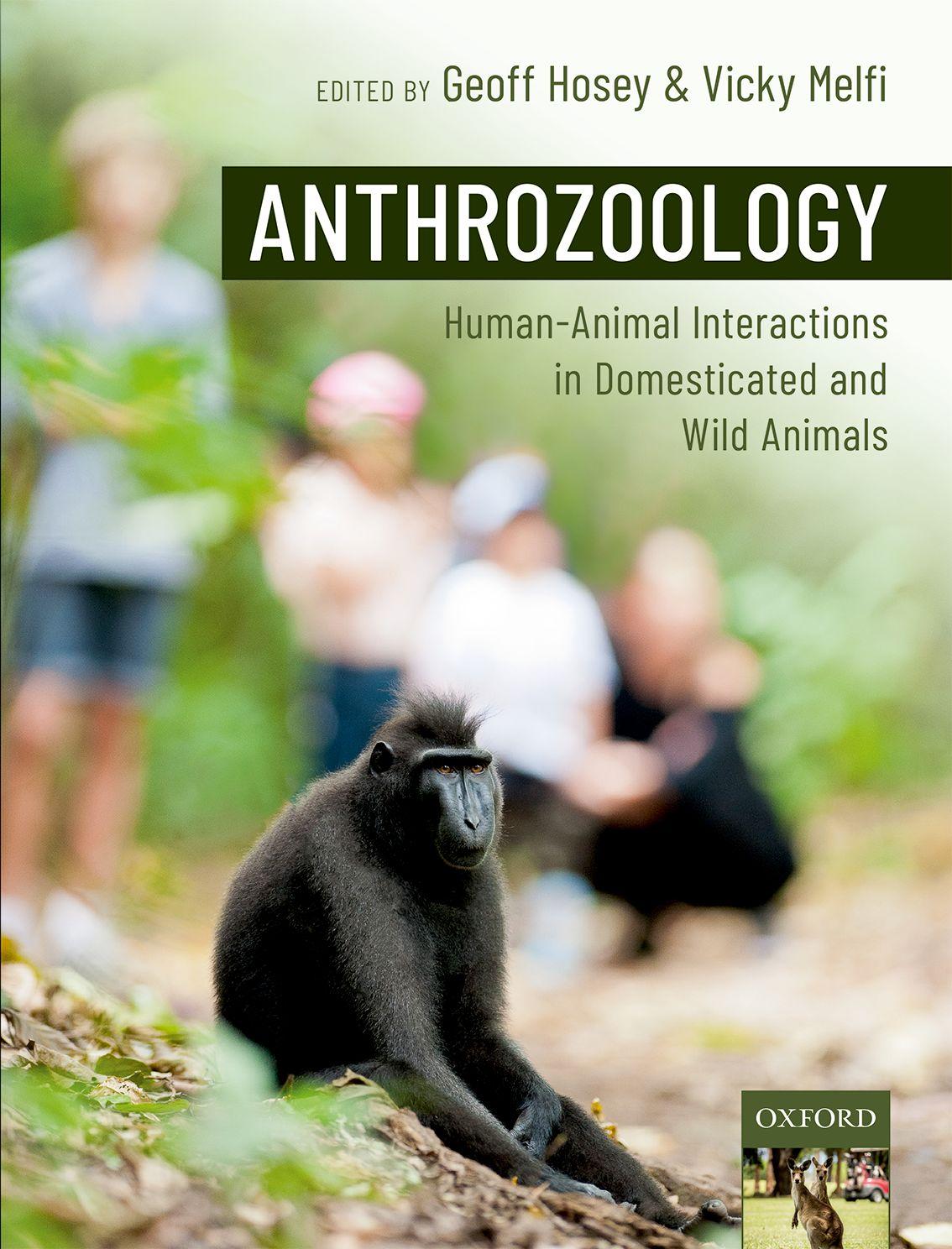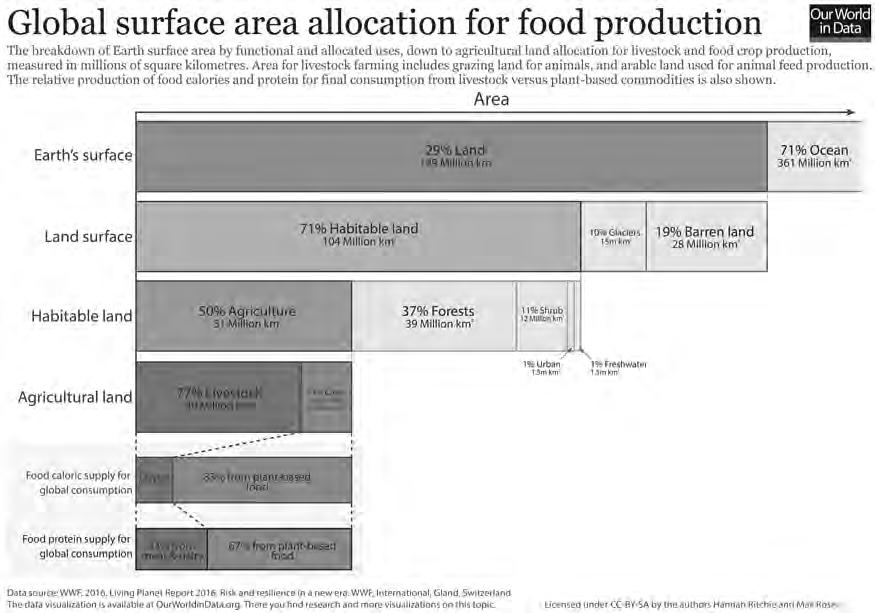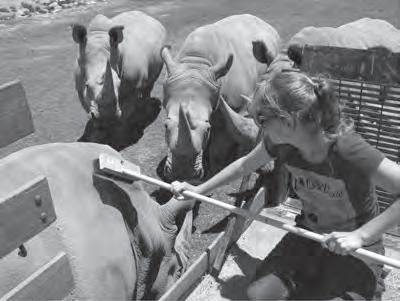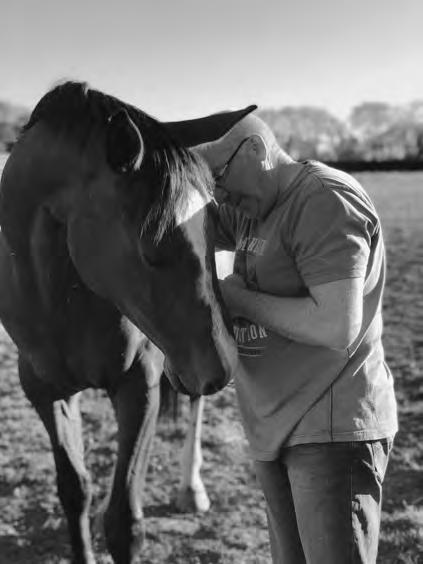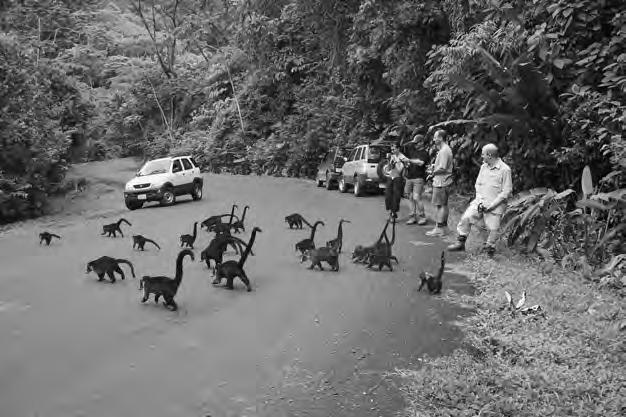CHAPTER 1 Introduction
Geoff Hosey & Vicky Melfi
1.1 Introduction
Where do we start to investigate and describe Human–Animal Relationships? With a current world human population of 7.3 billion (United Nations 2015), and 83% of the total land surface directly influenced by human activities (National Geographic News 2002; see Figure 1.1), there can be few animals who have not interacted with people at least once during their lives. And these animals cover a multitude of different species with different behaviours and different ecologies. We have also brought many millions of animals into captivity, in agriculture, laboratories and zoos, as well as to live with us as companion animals. Different species of animals living in these varied contexts may have different experiences of humans; the people who interact with these animals may also have different experiences in these varied contexts. But it is legitimate to ask whether there are any underlying commonalities or general principles which can help us to explain and understand the processes and consequences involved when animals and people regularly interact with each other. This search for commonalities is a major theme of this book. But firstly we should consider exactly what we mean.
1.2 Defining what we mean
Perhaps the first thing to say is that we are very aware that humans are animals too. But repeated use of ‘nonhuman animals’ is cumbersome, and the phrase
‘human–nonhuman animal interaction’ is even more cumbersome. Furthermore, there is something of a divide between human and nonhuman animals in terms of the relationships described here. If it were up to the animals it’s likely that most of the interactions and relationships described in this book would not happen; in a sense they are forced on animals by our behaviour, and it’s important for us to determine how our contact with animals affects their lives. For these reasons we will continue to use the terms ‘human’ and ‘animal’ as the two components of these relationships.
1.2.1 HAS, HAI, HAR and HAB
Study of the interface between humans and animals is truly interdisciplinary, and can involve a variety of approaches including ethological, psychological, anthropological, sociological, historical, ethnographical, economic, legal and philosophical. Collectively, these approaches constitute the field of Anthrozoology defined as ‘the scientific study of human–animal interaction (de Mello 2012). The area of Human Animal Studies (HAS) ‘explores the spaces that animals occupy in human social and cultural worlds and the interactions humans have with them’ (de Mello 2012). An alternative but similar definition is that HAS ‘embodies a sustained interest in understanding and analysing how we humans relate to and make sense of other species’ (Birke & Hockenhull 2012). Often used synonymously, these terms to some degree reflect a discipline bias; Anthrozoology more commonly used in the
Hosey, G. and Melfi, V., Introduction. In: Anthrozoology: human–animal interactions in domesticated and wild animals. Edited by Geoff Hosey and Vicky Melfi: Oxford University Press (2019). © Oxford University Press. DOI: 10.1093/oso/9780198753629.003.0001
natural sciences and HAS in the humanities. By this definition anthrozoology is a more restricted field than HAS, and corresponds more closely to the approach taken in this book. There is less about the wider approaches to human–animal relationships in this book; rather our authors have concentrated on what Birke & Hockenhull (2012) have referred to as a ‘microlevel’ approach, describing and analysing interactions and relationships at the level of individual dyads, or in cases where this is unfeasible, at a group or population level.
There has been a long tradition, dating back to the 1970s, of using this microlevel approach to investigate relationships between companion animals and their owners (Hosey & Melfi 2014), and much of this research has been concerned with the benefits pet owners accrue from interaction with their animals, spawning a new subdiscipline of Animal Assisted Intervention (Griffin et al. 2012). Since the 1980s
there has also been a substantial research effort into understanding the relationships between animals kept for agriculture and their stockpersons, and a major goal of this research has been to determine how these relationships affect the welfare, and in turn the productivity, of the animals (Hosey & Melfi 2014). So these two major approaches have different preoccupations and largely different goals; they are also different from each other in their use of terminology. A survey of the literature showed that 49% of agricultural papers in this field used the term ‘human–animal relationship’, whereas only 5% used the word ‘bond’. In contrast, 53% of companion animal papers used the word ‘bond’, and only 14% used the term ‘human–animal relationship’ (Hosey & Melfi 2014). Indeed, throughout the whole of anthrozoological research there is inconsistency and ambiguity in the use of terms, and it has been suggested that this hinders progress in this field (Griffin et al. 2012).
Figure 1.1 Most the Earth’s surface is impacted by humans; with a large proportion being used for agriculture (WWF 2016; CC-BY-SA Hannah Ritchie & Max Roser).
Three widely used terms in particular would benefit from pinning down to hard definitions: human–animal interactions (HAIs), human–animal relationships (HARs) and human–animal bonds (HABs). These words are often used vaguely in the literature, with HARs and HABs frequently being used as though they are interchangeable. Furthermore, all three are used to describe phenomena at the macro level (i.e. population, group, species or society level) as well as the micro level (individual animals and people), even though they likely mean something different at each of these levels. The most fundamental of these terms is the HAI, as these effectively form the units out of which HARs and HABs are constructed.
A human–animal interaction (HAI) is a dyadic event in its most basic form, that is, it’s an event between two individuals, one an animal the other a human. A good starting point is Hinde’s (1974, 1976) work on human–human interaction, which can easily apply to human–animal interaction too. His conception of an interaction is ‘a sequence in which individual A shows behaviour X to individual B, or A shows X to B and B responds with Y’ (Hinde 1976). An advantage with this definition is that as well as being conceptual (defining the phenomenon), it is also operational in that it helps us to identify interactions in our research by drawing attention to the outcome of the interaction (i.e. behaviour Y, B’s response). Thus we need not be unduly concerned about whether behaviour X was intentional or not (always a problem in describing animal communication), neither
should we worry too much about what X was (if we missed it), because Y identifies and quantifies the interaction for us.
At the end of an interaction each member of the dyad is likely to have learned something about the other. We can thus envisage that if the same two interactants meet again, their responses to each other’s behaviours might be slightly different from their first meeting; and if they continue to have interactions with each other they might attain such familiarity that they can start to anticipate what the other is likely to do (e.g. Figure 1.2). They now have a relationship. Hinde, then, sees a social relationship as the consequence of ‘a series of interactions over time between two individuals known to each other’ (Hinde 1987, p. 24). Again, this can apply to dyads where one interactant is human, the other an animal, in other words a human–animal relationship (HAR). Many other descriptions of HARs follow this sort of reasoning; for example, Sanders (2003) says that relationships are composed of ‘routine and patterned interactions’. What if the two interactants do not meet again, but continue to have interactions with others who are different each time?
Most animals, including humans, are able to generalise their knowledge about a variable stimulus by picking out the stimulus features which are salient to them. Thus we can envisage that an animal or person repeatedly encountering other animals or people of a general category will build up a generalised ‘view’ of that category, and perhaps have a
Figure 1.2 Similar positive interactions with different animals: a zoo keeper and pet owner initiating positive brushing with white rhinos and cats (a) Photograph from Katharina Herrmann, and (b) photograph from ID 84287241 © Vladans, Dreamtime.com.
(a) (b)
characteristic response to members of that category. Thus, those of us who don’t own a dog may nevertheless sometimes interact with other people’s dogs, and it may be that we gradually come to respond to them in a fairly consistent way because we have a generalised view of what dogs are like and what they do, based on the varied interactions we have had with them. Similarly, animals in a zoo interact with lots of different members of the public, and as a result have generalised expectations of what zoo visitors are likely to do, meaning that they can respond to these people in a consistent way (Hosey 2008). In these cases we can regard the individual as having a generalised HAR, but although this can be the result of interaction with lots of different individuals, the HAI is still the basic unit of the relationship. Going one rung up from the micro to the macro level, we can envisage that both interactants in a HAR are categories which generalise; this, for example, might describe the relationship between crop farmers and the elephants who raid their crops, or the way suburban commuters view urban fox populations. What, then, is a human–animal bond (HAB)? Hinde (1974) defined a social bond as a ‘mutual, affective, emotional attachment between two individuals that is relatively long lasting and survives temporary separations’. This sort of definition is also appropriate where one of the individuals is an animal, and this has been formalised for a HAB in a frequently used definition from the American Veterinary Medical Association (AVMA 1998): ‘The human–animal bond is a mutually beneficial and dynamic relationship between people and animals that is influenced by behaviors that are essential to the health and wellbeing of both. This includes, but is not limited to, emotional, psychological, and physical interactions of people, animals, and the environment’. The main characteristics of the HAB have been identified by Russow (2002) as (i) that it is a relationship between two individuals, (ii) that it is reciprocal and persistent and (iii) that it promotes a feeling of wellbeing in both parties. Conceptually this is straightforward; you can’t have a generalised HAB, it has to be between one animal and one person, and both must experience the feelings of wellbeing that go with it. Practically it is far from straightforward. Most studies assume the presence of a bond from human behaviour, without explicitly
testing for it in the animal (Hosey & Melfi 2014). Emotional attachment and feelings of wellbeing can be measured without too much difficulty in human subjects, but showing them in an animal is a different matter entirely. But this is something which needs to be addressed if anthrozoology is to be truly scientific (see Figure 1.3).
It might be asked, does it matter? Is there any real reason why we need to distinguish HARs from HABs? We believe it does matter, for a number of reasons. Firstly, it is important in science to be explicit and precise in our use of terminology, as this is how people know exactly what it is we’re referring to. Secondly, our use of words can influence our perception of the world; in this case our descriptions of our relationships with animals can affect our ethical stance towards them as well as our perceptions of them as social partners (Anthony 2003; Boivin et al. 2003). For example, we might view HAB formation as desirable between companion animals and
Figure 1.3 Though it might be difficult to empirically determine a reciprocal human–animal bond, there are many relationships which, qualitatively, appear to fit the definition. Photograph from Jane Williams.
their owners, because some might consider that the whole point of pet ownership is to enhance wellbeing (Serpell 1986); but we might also think that HABs between zookeepers and their animals should be discouraged because an emotional distance might be seen as desirable between people and ‘wild’ animals (Hosey et al. 2018).
1.2.2 Relationship quality
We can, then, envisage the HAI, HAR and HAB along a quantitative dimension (time) and also a qualitative dimension which encapsulates those feelings of attachment and wellbeing, and this is illustrated diagrammatically in Figure 1.4. HARs result from an accumulation of HAIs over time, but whether a HAR needs time to develop into a HAB is unclear, so the two have been drawn at similar places on the time axis. Good quality HAIs (e.g. friendly, calm and gentle interactions, or rewarded interactions) result in a good quality HAR, as measured both by its inputs (those good quality HAIs) and also by its consequences (e.g. more relaxed, less stressed interactants). But Figure 1.4 could also be drawn as a mirror image, with a descending negative qualitative axis. Some HAIs are negative (e.g. aggression, violence) and can lead to negative
HARs. The quality of the HAR is thus the consequence of the net quality of preceding HAIs. Finally, the quality of HAIs is itself influenced by a number of variables, including the perceptions and attitudes of the person or animal, and their previous experience of interacting with that or similar interactants. This is summarised in Figure 1.5, which shows that the positivity or negativity of an HAI changes the perceptions and attitudes of the recipient of that interaction, with the result that their response to it may similarly become more negative or more positive. In Figure 1.5 the dark arrows show the interactants moving towards a negative HAR, while the pale arrows show them forming a positive HAR.
1.3 What is the distribution of HARs through the animal kingdom?
A number of interesting questions arise about HARs and possibly other interspecific relationships and their distribution in the animal kingdom. Are there limitations about which kinds of animals are capable of HAIs, HARs and HABs? And do interspecific relationships similar to HARs occur between nonhuman species, and if only with humans, why should that be?
Figure 1.4 Hypothetical relationship between human–animal interactions (HAI), human–animal relationships (HAR) and human–animal bonds (HAB). ‘Quantitative measures’ is a time axis, showing repeated contact between interactants. ‘Qualitative measures’ is meant to represent an increase in well-being or emotional attachment. So repeated HAIs, if they are positive, lead to the formation of a positive HAR. If this HAR eventually involves increased well-being and emotional attachment in the interactants, we can regard it as a HAB.
Attitudes, perceptions and experience
1.3.1 Distribution of HARs among animals
It seems reasonable to assume that for interactions and relationships to develop between humans and animals, animals need to be sufficiently similar to and share some commonalities with humans, if for no other reason than that social interactions and relationships need to be communicated and understood by both parties. The extent to which these commonalities extend within the animal kingdom is not clear, because it is unclear what these commonalities need to be. It seems reasonable to suggest that a shared geography is a prerequisite, as both parties need to meet in order to interact and meet repeatedly for a relationship to develop. As already mentioned, repeated interactions might occur between
the same person and the same animal, or the same person and different animals (of the same species), or the same animal and different people, as we would expect the outcomes of the repeated interactions to be generalised by species and a HAR formed on the basis of these.
Aside from shared geography and the creation of opportunities for these interactions to occur and relationships to develop, what other commonalities might be needed? The animals need to be receptive to initiating, receiving and responding to social cues with humans. Communication can operate on many different levels and use different modalities. For example, human communication is often categorised as visual, auditory and kinaesthetic (tactile); describing modalities that people are often more receptive
+ve HAI
–ve HAI
Figure 1.5 Summary of how reciprocal HAIs of different quality lead to different quality HARs. The positivity or negativity of a HAI influences the attitudes and perceptions, and hence the behaviour, of the recipient, such that positive HAIs are likely to generate reciprocal positive HAIs, leading to the establishment of a positive HAR, and likewise for negative HAIs.
to and fluent in. Other species can often communicate using modalities or ranges we can’t appreciate, i.e. using colours we can’t see, like ultraviolet vision in some bird and fish species (reviewed, Land 2018), vocalising in sounds outside of our hearing range or using magnetic fields in sensory communication (Hill et al. 2017). There are, however, many species who use communication cues which we are able to appreciate, such as vocalisations which can be detected by human ears and behavioural changes we can see. We can also detect more subtle communication cues, including changes in skin colouration, respiration rate and body posture shown by different species. When we consider the many different species with whom we can communicate, it becomes apparent that the scope for interactions and relationships between humans and animals is quite vast.
Alongside the need to be able to communicate effectively, animals need to have sufficient cognitive agility to recognise individual humans and/or generalise different people as humans. This task has been demonstrated in many different nonhuman species (reviewed, Smith et al. 2016). Cheney & Seyfarth (1992) explored how vervet monkeys Chlorocebus pygerythrus were able to categorise, and adjust their behaviour accordingly, to different threats in their environment, i.e. snakes and eagles. And these capabilities are not just the domain of primates, farm animals have also been demonstrated to show cognitive categorisation skills, e.g. dwarf goats Capra hircus (Meyer et al. 2012). However, for a HAB to develop the animal would also need the capacity for experiencing emotion, as the definition of a bond requires that both parties experience a positive affective state resulting from their HAR. Until recently, the concept of animal emotion has been debated with some scepticism (Wemelsfelder 1997). But more and more empirical studies are demonstrating that animals have emotions like us, or a similar phenomenon which functions in the same way (Mendl et al. 2010). For example, rats have been shown to giggle when tickled (Panksepp & Burgdorf 1999).
As humans we are incredibly anthropocentric, a bias which influences which animals we prefer, as well as the scientific questions we ask, and how we determine to answer them (Fraser 2008; Batt 2009).
When we consider HAIs, HARs and HABs, most people start from a position where humans are considered to have superior capabilities and/or skills to other animals (e.g. http://freakonomics. com/podcast/animaleconomics/). These superior capabilities have historically been considered to set people apart and ahead of other animals (Suddendorf 2013). We revere capabilities which we believe ‘make us human’ and demonstrate that we are ‘more’ than animals. Interestingly, the list of capabilities which separates us from other animals has declined over time, as science has deepened our knowledge of animals’ capabilities. And this is despite scientific endeavour being anthropocentric with regard to testing whether animals share the capabilities we revere, and if they do, to what extent; rather than testing to see what capabilities they have, which we might not. Language, tool use, culture and morality were all considered uniquely human traits. But increasingly, research on primates, birds and fish, as well as other species, has demonstrated that these and other capabilities are shared and expressed in our animal relatives (Suddendorf 2013). However, as this area is subject to continual debate, it may be easier to consider what capabilities are required in ‘other’ animals to interact, develop relationships and experience bonds with us humans.
When we think about the range of animals with whom humans might develop relationships, most people would probably consider these to be restricted to animals that are like us. And what animals are like us? Primates are often noted for their high degree of genetic relatedness to humans and commonalities in their social behaviour (de Waal & Ferrari 2012). It is not a big leap from this to consider other mammals and birds too, which have also been observed to show high levels of social and cognitive complexity, so maybe they are sufficiently similar to us for HAI, HAR and HAB too? And why stop there? Studies of reptiles, and to some extent amphibians, also find problem solving, parental care, play and complex sociality (Burghardt 2013).
1.3.2 Relationships between (nonhuman) animals
As far as we can tell, humans are the only species which keeps other species as pets for companionship
or social support (see Chapter 2). And although apparent ‘friendships’, which we might regard as animal–animal relationships similar to HARs, do occur in both wild and captive animals, they are unusual and not part of any systematic speciestypical pattern (Dagg 2011). This raises a number of questions about the ontogeny or evolution of these behaviours in humans, which are not currently answerable, but which are best approached in a multidisciplinary way.
As mentioned in Section 1.2.1, HAS are multidisciplinary for a very good reason: different disciplines can help us to understand different aspects of HAIs, HARs and HABs. There are different perspectives we can use to understand why people develop HARs as a consequence of repeated HAIs. In psychology, learning theory suggests that reinforced behaviours are repeated, whereas punished behaviours diminish over time. Adopting this psychological perspective, we might venture that HARs develop where repeated HAIs result in consequences (reinforcement); positive interactions result in positive relationships and potentially bonds, whereas negative interactions result in negative relationships and no HAB.
Considering this same issue from a behavioural ecological perspective, we might explore whether other animals engage in and experience interspecies interactions and relationships, and whether they experience bonds. And importantly, if these interspecies behaviours do occur, do they bestow an evolutionary advantage which might explain why we too engage in these behaviours? Or are they costly, making their evolution unlikely other than in particular circumstances?
An anthropological or sociobiological perspective might enquire whether humans are predisposed towards these interspecies interactions: are these HAIs, HARs and HABs intentional and sought out or a result of opportunistic interactions? The eminent sociobiologist E.O. Wilson suggested that people were especially drawn to nature, a phenomenon he termed biophilia (Wilson 1984). And it certainly makes sense that this fascination and love of nature might include animals, which are part of nature, and thus we might expect people to be receptive to communicating with other animals.
1.4 Why do we care about HAI, HAR and HAB?
HAS are multidisciplinary because their ramifications are far reaching, and thus to fully appreciate their influence different metrics and perspectives are necessary. It is not surprising, therefore, that we should care about HAIs, HARs and HABs for many different reasons; and as humans, these centre on how interactions with animals affect our lives and the lives of other people. It is likely that there are few, if any, people whose lives are unaffected by interactions with animals, directly and indirectly. And it is true that few animals live without interaction with or consequence from human actions and activity. HAIs, HARs and HABs are far from new. Unsurprisingly, HAIs are not new and can be seen in the earliest human historical records that exist, almost 40,000 years old, depicting animals and humans (the latter are mostly represented as hand prints) in rock paintings in Sulawesi, France and Spain (Marchant 2016). Subsequently, records of HAI are intertwined with our evolution and cultural development and stratification (Serpell 1986; Encyclopedia.com 2018). An extreme example of this coevolution can be found in our species relationship with dogs. The consequence of this specieslevel relationship appears to have resulted in humans and dogs being predisposed to relate to one another. Different mechanisms which support human–dog relationships include: dogs being especially good at reading human social gestures (Hare & Tomasello 2005); they appear to understand not only dog emotions but also human mental states and respond appropriately to them (Miklosi et al. 2000, 2004; Albuqerque et al. 2016); and importantly humans can interpret dogs’ emotions from their vocalisations (Faragó et al. 2017). With this shared history, it seems far from surprising that HAS has developed. What is peculiar is that this widespread interest in HAS seems to have recently risen substantially; evidenced in the popular literature, emergence of new HAS courses, publication within peer review and changes in legislation which reflect and acknowledge both parties. This could represent a hopeful move towards people considering their relationship with animals and the world more generally; so that happy, healthy and sustainable HARs can be developed (Knight 2015; WWF 2016).
1.4.1 Financial incentives
The interactions and relationships between humans and animals have been dynamic over time and by species, where animals represent food, religious idols, companions and much more. As previously mentioned, HAS spans many different academic disciplines, so establishing a focus can be complex. A historical review of HABs suggested that in the last couple of decades, funding, programmes and research have focussed on the importance of human–animal interactions on human health and wellbeing (Hines 2003). Hines (2003) suggests that this has resulted from funding from the pet industry. It is probably fair to say that an appreciation of the economic consequences of interactions with animals has been responsible for stimulating different foci in HAS. HAIs, HARs and HABs all have direct financial costs associated with them; for instance, financial advantage, as well as improved wellbeing for people and animals, can be gained in agricultural production when positive HAIs are applied (Waiblinger et al. 2006; reviewed Chapter 3). While it is difficult to estimate the direct financial implications of HAIs and HARs within agriculture and other contexts, they are embedded in the success of these industries; they would not operate without animals. Consideration of the financial worth of these industries, or aspects
of them, can provide an indication of the financial value of HAIs and HARs to them. For example: the global animal agricultural industry was estimated to be worth more than $3 trillion in 2016 (WHO 2018); sustainable wildlife tourism was estimated to generate more than $600 billion in tourism revenue in 2015 (TwiningWard et al. 2018; see Figure 1.6); the pharmaceutical industry, which is one of several industries using laboratory animals, was valued at about $300 billion dollars in 2015 and predicted to rise to $400 billion dollars within three years (Peggs 2015); the pet food industry in the USA alone generates more than $100 billion annually (reviewed Chapter 2); and the financial contribution zoos made to the USA and Australia was estimated at $22.5 billion in 2016 and $434 in 2009, respectively (AZA 2018; Aegis 2009). Certainly, there are many reasons why we should be interested in HAIs, HARs and HABs, not least that it could prove expensive not to be interested.
1.4.2 Improved quality of life
Interactions with animals affect the physical, psychological and emotional health of both parties (e.g. in human gerontology, Gee et al. 2017; also reviewed throughout this book). This can include the food people choose to eat, whether they keep a pet or are
Figure 1.6 Wildlife tourists getting opportunistic photographs of coatimundi crossing the road in Costa Rica. Photograph from Vicky Melfi.
exposed to other people’s pets or whether they choose to see animals in their native range, both at home or on wildlife holidays. It also includes the impact of animals which are considered to deleteriously affect human outcomes, both in an urban environment or the animals’ native range, when we confer on them the derogatory epithet of pest: ‘a species located where humans don’t want them’. Recognition of the scope by which HAIs, HARs and HABs influence the quality of life for both parties, is increasing. It is probably fair to say that there is greater interest, at least within published empirical literature, in how animals can promote human quality of life compared to how we might improve animals’ quality of life (e.g. Bokkers 2006). Serendipitously, there is evidence that benefits for both humans and animals can be positively correlated, and thus improvements for one are also seen to have positive ramifications for the other. For example, increased agricultural animal productivity is of benefit to people, and can be achieved when animal welfare is improved (reviewed Chapter 3; Zulkifli 2013).
1.4.3 To ensure scientific rigour
Our society is increasingly recognising the need for evidencebased systems (EBS); a premise which uses reliable empirical data on which to make decisions. Evidencebased medicine is probably a term and concept many are familiar with, so it is probably unsurprising that EBS have been applied to other medical disciplines e.g. psychiatry (Barron 2017), as well as other biological fields and indeed those which are multidisciplinary, like conservation (Sutherland et al. 2004). The importance of using reliable and rigorous data is paramount to support these EBS. Animals have been, and still are, central in our understanding of many branches of science, including pharmacology, toxicology, food safety, as well as behaviour and endocrinology and much more (Bottini & Hartung 2010). There is a long history of animal use in science, which has developed into modern animal laboratory science guided by three principles (the Three Rs): replacement, reduction and refinement, the aims of which are to use as few animals as possible (Baumans, 2005; reviewed Chapter
4). To ensure scientific rigour when animal models are used, contemporary research suggests that conditions which promote animal welfare also promote good science; which can include a move away from standardisation and the promotion of good HAIs and HARs (Richter et al. 2009; Davis & Balfour 1992). There are of course consequences for the health and wellbeing of both parties, and an almost incalculable financial consequence to industry and society.
1.4.4 To minimise human–animal conflict
We have focussed on the benefits which can result for both humans and animals when there are positive HAIs and HARs. Similarly, negative HAIs and HARs are associated with costs for both parties; these are above and beyond the absence of the positive consequences of positive HAIs and HARs. Conflict arises between humans and animals when actions from either adversely affect the other (reviewed, Nyhus 2016). Most research conducted in this area has focussed on wildlife. According to definitions of human–wildlife conflict, the threat to human life/health/safety, economics, food or property security, or recreation can be actual, potential or perceived (Treves & Karanth 2003; Peterson et al. 2011). This issue is complex, not least because we can perceive interactions differently, so some see conflict where others do not. Furthermore, our perceptions of different species also affect how we perceive risks of and conflicts with these animals; for example many people are concerned by the risks posed by apex predators, but not necessarily with smaller or seemingly insignificant wildlife which pose a significant disease risk (Soulsbury and White 2015; Chapron et al. 2014; Jones et al. 2008). Conflict can also arise between ‘human proxy animals’ (animals serving a role in society i.e. within agriculture and as companion animals) and native animals; a conflict can arise according to whichever animal people perceive to be ‘in the right’ i.e. endemic over introduced wild animals (Reidinger et al. 2013).
Consequences are significant in terms of impact on life, economy and the environment (Woodroffe et al. 2005; Nyhus 2016). Conflict can range in intensity from minor (a nuisance) to severe (lethal), and in frequency from rare to common (see Figure 1.7,
Figure 1.7 A model which illustrates the different types of HAI that occur, along the x axis from negative to positive interactions, the impact of the interactions on humans is represented on the y-axis from minor to severe and the z-axis represents the frequency at which these interactions occur from common to rare (after Nyhus 2016, https://www.annualreviews.org/doi/full/10.1146/annurev-environ-110615-085634).
from Nyhus 2016). Direct or indirect consequences for humans can include: attack, which can be lethal and/ or transmit disease which can also be lethal (e.g. rabies transmission, Hughes & Macdonald 2013); vehicle collision with an animal (Olson et al. 2014); loss or damage to material goods (including property, agriculture e.g. Waterfield & Zilberman 2012); and reduced wellbeing (e.g. when pets are killed by wildlife, Lescureux & Linnell 2014). Whereas direct and indirect consequences for animals can include: species extinction, of which there have been many (Woodroffe et al. 2005); death of individuals intentionally, through pest management which aims to exterminate a species (Bomford & O’Brien 1995), persecution and hunting, to accidental collisions with vehicles (Olson et al. 2014), turbines, houses and other terrestrial objects (Calvert et al. 2013) and ships (van der Hoop et al. 2013); infection by human (or human animal proxy) carried disease (Messenger et al. 2014); contributing to and being negatively affected by reduced ecosystem services (Luck et al. 2003); as well as various abuses inflicted on captive and wild animals (Maher et al. 2017).
Most of these conflicts arise through competition for resources. This competition can arise when: humans choose to live in areas that overlap the home ranges of native animals, which with increasing populations and decreasing wilderness is an increasing likelihood; where animals choose to move into areas inhabited by people, i.e. polar bears moving into urban areas to exploit human refuse as a resource; and when people introduce animals which are then in competition with native animals, e.g. introduced mammals versus native marsupials in Australia (Woinarski et al. 2015). They can however also result from incompatible behaviours performed by either party. Measures taken to reduce human–animal conflict have included: legislation to outlaw attacks on and/or to protect species which have declined due to conflict, e.g. several European carnivore species (e.g. Chapron et al. 2014), and where killing is allowed, humane recommendations to be provided (e.g. HSA 2011); the creation of health and safety standards for work with captive animals (e.g. DEFRA 2012); training programmes to promote positive attitudes and empathy for animals in those working with them
(e.g. in agriculture, Coleman & Hemsworth 2014); compensation schemes to offset damages made by animals, stakeholder engagement and sustainable ecotourism (e.g. Madden 2004; Dickman et al. 2011; TwiningWard et al. 2018). Some of the more imaginative solutions to conflict can be found in wildlife and urban ecology, where attempts are being made to find ways of coexisting with animals (Redpath et al. 2013).
1.4.5 To create a better world
We are living in the Anthropocene, a period of time when our actions are changing our climate and destroying habitats so fast that these extraordinary events can be witnessed during a single human lifetime. Species extinctions are occurring on a scale and at a speed reminiscent of a mass extinction. The Living Planet Index, which measures biodiversity, has estimated that 58% of monitored species declined between 1970 and 2012 (WWF 2016). The main threat to species survival is habitat loss and degradation (Newbold et al.). Not only does our use of land directly endanger species with extinction, it also exacerbates the impacts of humancaused climate change (Mahowald et al. 2017). We currently live in a time when 40% of the Earth’s surface has been converted for use in agriculture and a further 3% is used to house urban communities (Liu et al. 2014). Unsustainable agriculture and logging, as well as changes to freshwater systems, seem to be the main causes of habitat loss (Baillie et al. 2010). Though habitat loss is the greatest threat to species globally, in Australia, which has experienced more than 10% extinction of its 273 terrestrial species, predation by introduced species, and changes to the fire management regime, seem to be the greatest threats (Woinarski et al. 2015). Introduced species not only predate other species but also cause environmental damage, like the feral camels in Australia, the cost of which has been estimated to be $7.15 per annum (Zeng and Edwards 2010). Often not recognised as introduced species, our pets can have devasting effects on other species. Notably, domestic cats have been estimated to kill 1.3–4.0 billion birds and 6.3–22.3 billion mammals annually in the USA and are considered to have contributed to
at least sixtythree vertebrate extinctions worldwide (Loss et al. 2012; Loss and Marra 2018). Pets have also been identified as threats to conservation programmes when housed within reserves or ecotourism facilities (Bessa et al. 2018).
But our interactions with animals globally and more locally are not all bad; in fact, there have been considerably positive HAIs initiated by people, to establish greater positive future HAIs and potentially HARs with animals. The Convention on Biological Diversity set ambitious targets of protecting 17% of terrestrial and 10% of marine regions by 2020; along with ‘bold science’ and strategic thinking, experts consider that this will ‘generate genuine benefits to biodiversity’ (Watson et al. 2016; Butchart et al. 2015). For example, it has been calculated that without conservation efforts, including targeted interventions and habitat protection, the status of the world’s 235 recognised hoofstock species would have been eight times worse than observed; it was estimated that at least 148 species would have dropped by at least one IUCN red list category, meaning some might have become extinct (Hoffmann et al. 2015). Avian conservation efforts implemented in the USA were also found to be successful, though funding allocation and population trend were positively associated; the more money that was spent seemed to ensure greater conservation success (Luther et al. 2016). Furthermore, efforts are being made towards being creative in how to establish positive HAIs, through the amelioration of threats (e.g. the development of conservation physiology, Madliger et al. 2016). Unthinking previous traditional agricultural methods, which have been ridiculed in the past for their detrimental impact on other animals and nature (Ripple et al. 2013), might also provide solutions for using cows and hoofstock in general to help to regenerate grasslands and stave off the devastation of desertification, which is becoming more widespread (Savory & Duncan 2015). The Anthropocene has thus far been epitomised by negative HAIs and HARs, it doesn’t need to be. We can instead care more about issues relating to the environment, sustainability and conservation (AriasMaldonado 2013; Knight 2015). And we can choose to work towards building positive HAIs and HARs, which will contribute towards a more resilient world (WWF 2016).
References
Aegis (2009). Report on the economic and social contribution of the zoological industry in Australia. Prepared for the Australian Regional Association of Zoological Parks and Aquaria, by Aegis Consulting Australia & Applied Economics, March 2009. http://www.aegisconsultgroup. com/aegis/wp content/uploads/Aegis Report onSocioEconomicValueofZoologicalIndustry2009.pdf (Accessed: 17 May 2018).
Albuquerque, N., Guo, K., Wilkinson, A., Savalli, C., Otta, E. & Mills, D. (2016). Dogs recognize dog and human emotions. Biology Letters, 12(1), 20150883. http://doi. org/10.1098/rsbl.2015.0883.
Anthony, R. (2003). The ethical implications of the human–animal bond on the farm. Animal Welfare 12, 505–12. AriasMaldonado, M. (2013). Rethinking sustainability in the Anthropocene. Environmental Politics , 22(3), 428–46.
AVMA (1998). Statement from the Committee on the Human–Animal Bond. Journal of the American Veterinary Medical Association 212, 1675.
AZA (2018). Annual survey results, May 2018. https:// www.aza.org/zooandaquariumstatistics (Accessed: 17 May 2018).
Baillie, J.E.M., Griffiths, J., Turvey, S.T., Loh, J. & Collen, B. (2010). Evolution Lost: Status and Trends of the World’s Vertebrates. London, Zoological Society of London. Barron, D. (2017). The rise of evidencebased psychiatry: we need to approach the brain as a computational organ, one to be evaluated with measurements and calculations. Scientific American, 28 February 2017. https:// blogs.scientificamerican.com/guest b log/the r ise o fevidencebasedpsychiatry/ Accessed on: 18 May 2018. Batt, S. (2009). Human attitudes towards animals in relation to species similarity to humans: a multivariate approach. Bioscience Horizons, 2(2), 180–90.
Baumans, V. (2005). Sciencebased assessment of animal welfare: laboratory animals. Revue Scientifique Et Technique-Office International Des Epizooties, 24(2), 503.
Bessa, E., Blumstein, D.T., Samia, D.S. & Geffroy, B. (2018). Pets at ecotourism destinations: cute mascot or trojan horse? Current Issues in Tourism, 1–3.
Birke, L. & Hockenhull, J. (2012). Introduction: on investigating human–animal relationships. In: Birke, L. & Hockenhull, J. (eds) Crossing Boundaries: Investigating Human–Animal Relationships. Leiden, Brill, pp. 1–12.
Boivin, X., Lensink, J., Tallet, C. & Veissier, I. (2003). Stockmanship and farm animal welfare. Animal Welfare 12, 479–92.
Bokkers, E.A. (2006). Effects of interactions between humans and domesticated animals. In Jan Hassink and Majken
van Dijk (eds.) Farming for Health pp. 31–41. Dordrecht, Springer.
Bomford, M. & O’Brien, P. (1995). Eradication of Autralia’s vertebrate pests: a feasibility study. In: G.C. Grigg, P.T. Hale and D. Lunney (eds.) Conservation Through Sustainable Use of Wildlife . St. Lucia, Queensland, University of Queensland, Centre for Conservation Biology.
Bottini, A.A. & Hartung, T. (2010). The economics of animal testing. ALTEX, Alternatives to Laboratory Experimentation, 27 (Special issue 1), 67–77.
Burghardt, G.M. (2013). Environmental enrichment and cognitive complexity in reptiles and amphibians: Concepts, review, and implications for captive populations. Applied Animal Behaviour Science, 147(3), 286–98.
Butchart, S.H., Clarke, M., Smith, R.J., Sykes, R.E., Scharlemann, J.P., Harfoot, M., Buchanan, G.M., Angulo, A., Balmford, A., Bertzky, B. & Brooks, T.M. (2015). Shortfalls and solutions for meeting national and global conservation area targets. Conservation Letters, 8(5), 329–37.
Calvert, A.M., Bishop, C.A., Elliot, R.D., Krebs, E.A., Kydd, T.M., Machtans, C.S. & Robertson, G.J. (2013). A synthesis of humanrelated avian mortality in Canada. Avian Conservation and Ecology, 8(2), 11. http://dx.doi. org/10.5751/ACE00581080211.
Chapron, G., Kaczensky, P., Linnell, J.D., von Arx, M., Huber, D., Andrén, H., LópezBao, J.V., Adamec, M., Álvares, F., Anders, O. & Balciauskas, L. (2014). Recovery of large carnivores in Europe’s modern humandominated landscapes. Science, 346(6216), 1517–19.
Cheney, D.L. & Seyfarth, R.M. (1992). How Monkeys See the World: Inside the Mind of Another Species. Chicago, University of Chicago Press.
Coleman, G.J. & Hemsworth, P.H. (2014). Training to improve stockperson beliefs and behaviour towards livestock enhances welfare and productivity. Rev. Sci. Tech, 33, 131–7.
Dagg, A.I. (2011). Animal Friendships. Cambridge, Cambridge University Press.
Davis, H. & Balfour, D.A. (eds.) (1992). The inevitable bond: Examining scientist–animal interactions. New York, USA, Cambridge University Press.
DEFRA (2012). Secretary of State’s Standards in Modern Zoo Practice. https://www.gov.uk/government/publications/secretary of state s standards of modernzoopractice Accessed: 23 May 1918.
De Mello, M. (2012). Animals and Society: an Introduction to Human–Animal Studies. New York. Columbia University Press.
De Waal, F. & Ferrari, P.F. (ed.) (2012). The Primate Mind: Built to Connect with Other Minds. Cambridge, USA, Harvard University Press.
Dickman, A.J., Macdonald, E.A. & Macdonald, D.W. (2011). A review of financial instruments to pay for predator conservation and encourage human–carnivore coexistence. Proceedings of the National Academy of Sciences, 108(34), 13937–44.
Encyclopedia.com (2018). The history of human–animal interactions. Retrieved 16 May 2018 from Encyclopedia. com: http://www.encyclopedia.com/politics/encyclopedias almanacs transcripts and maps/historyhumananimalinteraction
The History of Human–Animal Interaction—Dictionary definition of the history of human–animal interaction | Encyclopedia.com: FREE online dictionary.
Faragó, T., Takács, N., Miklósi, Á. & Pongrácz, P. (2017). Dog growls express various contextual and affective content for human listeners. Royal Society Open Science, 4(5), 170134.
Fraser, D. (2008). Understanding Animal Welfare: The Science in its Cultural Context. Oxford, WileyBlackwell. Gee, N.R., Mueller, M.K. & Curl, A.L. (2017), Human–animal interaction and older adults: an overview. Frontiers in Psychology, 8, 1416. doi: 10.3389/fpsyg.2017.01416.
Griffin, J.A., McCune, S., Maholmes, V. & Hurley, K. (2012). Human–animal interaction research: an introduction to issues and topics. In: McCardle, P.D., McCune, S., Griffin, J.A. & Maholmes, V.E. (Eds) How Animals Affect Us: Examining the Influences of Human-Animal Interaction on Child Development and Human Health. Washington DC, American Psychological Association.
Hare, B. & Tomasello, M. (2005). Humanlike social skills in dogs? Trends in Cognitive Sciences. 9 (9), 439. doi:10.1016/j.tics.2005.07.003.
Hill, R. W., Wyse, G. A. and Anderson, M. (2017). Animal Physiology 4th edition. Oxford University Press.
Hinde, R.A. (1974). Biological Basis of Human Behaviour New York, McGraw Hill.
Hinde, R.A. (1976). On describing relationships. Journal of Child Psychology and Psychiatry 17, 1–19.
Hinde, R.A. (1987). Individuals, Relationships and Culture Cambridge University Press, Cambridge, UK.
Hines, L.M. (2003). Historical perspectives on the human–animal bond. American Behavioral Scientist, 47(1), 7–15.
Hoffmann, M., Duckworth, J.W., Holmes, K., Mallon, D.P., Rodrigues, A.S. & Stuart, S.N. (2015). The difference conservation makes to extinction risk of the world’s ungulates. Conservation Biology, 29(5), 1303–13.
Hosey, G. (2008). A preliminary model of human–animal relationships in the zoo. Applied Animal Behaviour Science, 109(2–4), 105–27.
Hosey, G., Birke, L., Shaw, W.S. & Melfi, V. (2018). Measuring the strength of human–animal bonds in zoos. Anthrozoös, 31:3, 273–81.
Hosey, G. & Melfi, V. (2014). Human–animal interactions, relationships and bonds: a review and analysis of the
literature. International Journal of Comparative Psychology, 27, 119–44.
HSA (Humane Slaughter Association) (2011). Making a difference–100 years of the Humane Slaughter Association. Wheathampstead, UK, HSA.
Hughes, J. & Macdonald, D.W. (2013). A review of the interactions between freeroaming domestic dogs and wildlife. Biological Conservation, 157, 341–51.
Jones, K.E., Patel, N.G., Levy, M.A., Storeygard, A., Balk, D., Gittleman, J.L. & Daszak, P. (2008). Global trends in emerging infectious diseases. Nature, 451(7181), 990.
Knight, J. (2015). Anthropocene futures: People, resources and sustainability. The Anthropocene Review, 2(2), 152–8.
Land, M. (2018). Eyes to see: the astonishing variety of vision in nature. Oxford, Oxford University Press.
Lescureux, N. & Linnell, J.D.C. (2014). Warring brothers: the complex interactions between wolves (Canis lupus) and dogs (Canis familiaris) in a conservation context. Biological Conservation, 171, 232–45.
Liu, Z., He, C., Zhou, Y. & Wu, J. (2014). How much of the world’s land has been urbanized, really? A hierarchical framework for avoiding confusion. Landscape Ecology, 29(5), 763–71.
Loss, S.R. & Marra, P.P. (2018). Merchants of doubt in the freeranging cat conflict, Conservation Biology, 32(2), 265–6.
Loss, S.R., Will, T. & Marra, P.P. (2012). The impact of freeranging domestic cats on wildlife of the United States. Nature Communications, 4, 1396 doi: 10.1038/ ncomms2380.
Luck, G.W., Daily, G.C. & Ehrlich, P.R. (2003). Population diversity and ecosystem services. Trends in Ecology & Evolution, 18(7), 331–6.
Luther, D., Skelton, J., Fernandez, C. & Walters, J. (2016). Conservation action implementation, funding, and population trends of birds listed on the Endangered Species Act. Biological Conservation, 197, 229–34.
Madden, F. (2004). Creating coexistence between humans and wildlife: global perspectives on local efforts to address human–wildlife conflict. Human Dimensions on Wildlife. 9, 247–57.
Madliger, C.L., Cooke, S.J., Crespi, E.J., Funk, J.L., Hultine, K.R., Hunt K.E., Rohr J.R., Sinclair, B.J., Suski, C.D., Willis, C.K.R. & Love O.P. (2016). Success stories and emerging themes in conservation physiology. Conservation Physiology , 4(1), 1 January 2016, cov057, https://doi.org/10.1093/conphys/cov057.
Maher, J., Pierpoint, H. & Beirne, P. (eds.) (2017). The Palgrave International Handbook of Animal Abuse Studies London, Palgrave Macmillan.
Mahowald, N.M., Ward, D.S., Doney, S.C., Hess, P.G. & Randerson, J.T. (2017). Are the impacts of land use on warming underestimated in climate policy? Environmental Research Letters, 12(9), 094016.
Marchant, J. (2016). A journey to the oldest cave paintings in the world. Smithsonian Magazine, January 2016.
Mendl, M., Burman, O.H. & Paul, E.S. (2010). An integrative and functional framework for the study of animal emotion and mood. Proceedings of the Royal Society of London B: Biological Sciences, 277(1696), 2895–904.
Messenger, A.M., Barnes, A.N. & Gray, G.C. (2014). Reverse zoonotic disease transmission (zooanthroponosis): a systematic review of seldomdocumented human biological threats to animals. PloS one, 9(2), e89055.
Meyer, S., Nürnberg, G., Puppe, B. & Langbein, J. (2012). The cognitive capabilities of farm animals: categorisation learning in dwarf goats ( Capra hircus ). Animal Cognition , 15(4), 567–76. https://doi.org/10.1007/ s100710120485y
Miklósi, A’., Polgárdi, R., Topál, J. & Csányi, V. (2000). Intentional behaviour in dog–human communication: an experimental analysis of “showing” behaviour in the dog. Animal Cognition , 3(3), 159–66. doi:10.1007/ s100710000072.
Miklósi, Á., Topál, J. & Csányi, V. (2004). Comparative social cognition: what can dogs teach us? Animal Behaviour, 67(6), 995–1004. doi:10.1016/j.anbehav.2003.10.008.
National Geographic News (2002). https://news.nationalgeographic.com/news/2002/10/1025_021025_ HumanFootprint.html (Accessed 2 March 2018).
Newbold, T., Hudson, L.N., Hill, S.L., Contu, S., Lysenko, I., Senior, R.A., Börger, L., Bennett, D.J., Choimes, A., Collen, B. & Day, J. (2015). Global effects of land use on local terrestrial biodiversity. Nature, 520(7545), 45. Nyhus, P.J. (2016). Human–wildlife conflict and coexistence. Annual Review of Environment and Resources, 41, 143–71.
Olson, D.D., Bissonette, J.A., Cramer, P.C., Green, A.D., Davis, S.T., Jackson, P.J. & Coster, D.C. (2014). Monitoring wildlife–vehicle collisions in the information age: how smartphones can improve data collection. PLoS One, 9(6), e98613. https://doi.org/10.1371/journal. pone.0098613
Panksepp, J. & Burgdorf, J. (1999). Laughing rats? Playful tickling arouses high frequency ultrasonic chirping in young rodents. In Hameroff, S.R., Kaszniak, A.W. & Chalmers, D.J. (eds.), Toward a Science of Consciousness III: The Third Tuscon Discussions and Debates. Massachusetts Institute of Technology, MIT Press, pp. 231–44.
Peggs, K. (2015). An insufferable business: ethics, nonhuman animals and biomedical experiments. Animals : An Open Access Journal from MDPI, 5(3), 624–42. http://doi. org/10.3390/ani5030376.
Peterson, M.N., Birckhead, J.L., Leong, K., Peterson, M.J. & Peterson, T.R. (2011). Rearticulating the myth of human–wildlife conflict. Conservation Letters, 3, 74–82. Redpath, S.M., Young, J., Evely, A., Adams, W.M., Sutherland, W.J., Whitehouse, A., et al. (2013). Under
standing and managing conservation conflicts. Trends in Ecology & Evolution, 28(2), 1009.
Reidinger, R.F. & Miller, J.E. (2013). Wildlife Damage Management : Prevention, Problem Solving, and Conflict Resolution . Baltimore, MD, Johns Hopkins University Press.
Richter, S.H., Garner, J.P. & Würbel, H. (2009). Environmental standardization: cure or cause of poor reproducibility in animal experiments? Nature Methods, 6(4), 257.
Ripple, W.J., Smith, P., Haberl, H., Montzka, S.A., McAlpine, C. & Boucher, D.H. (2013). Ruminants, climate change and climate policy. Nature Climate Change, 4(1), 2.
Russow, L.M. (2002). Ethical implications of the human–animal bond in the laboratory. ILAR Journal 43, 33–7.
Sanders, C.R. (2003). Actions speak louder than words: close relationships between humans and nonhuman animals. Symbolic Interaction 26, 405–26.
Savory, A. & Duncan, T. (2016). Regenerating agriculture to sustain civilization. In IIan Chabay, Martin Frick and Jennifer Helgeson (eds.) Land Restoration: Reclaiming Landscapes for a Sustainable Future, pp. 289–309.
Serpell, J. (1986). In the Company of Animals. Oxford, Basil Blackwell.
Smith, J., Zakrzewski, A., Johnson, J., Valleau, J. & Church, B. (2016). Categorization: The view from animal cognition. Behavioral Sciences, 6(2), 12.
Soulsbury, C.D. & White, P.C.L. (2016). Human–wildlife interactions in urban ecosystems. Wildlife Research , 42(7), 541–53.
Suddendorf, T. (2013). The Gap: The Science of what Separates Us from Other Animals. New York, Basic Books. Sutherland, W.J., Pullin, A.S., Dolman, P.M. & Knight, T.M. (2004). The need for evidencebased conservation. Trends in Ecology & Evolution, 19(6), 305–8.
Treves A. & Karanth, K.U. (2003). Human–carnivore conflict and perspectives on carnivore management worldwide. Conservation Biology, 17, 1491–9.
TwiningWard, L., Li, W., Bhammar, H. & Wright, E. (2018). Supporting sustainable livelihoods through wildlife tourism. Tourism for Development . Washington, DC, World Bank. © World Bank. http://hdl.handle.net/ 10986/29417.
United Nations (2015). http://www.un.org/en/development/desa/news/population/2015 report.html (Accessed 2 March 2018).
Van Der Hoop, J.M., Moore, M.J., Barco, S.G., Cole, T.V., Daoust, P.Y., Henry, A.G., McAlpine, D.F., McLellan, W.A., Wimmer, T. & Solow, A.R. (2013). Assessment of management to mitigate anthropogenic effects on large whales. Conservation Biology, 27(1), 121–33.
Waiblinger, S., Boivin, X., Pedersen, V., Tosi, M.V., Janczak, A.M., Visser, E.K. & Jones, R.B. (2006). Assessing the human–animal relationship in farmed species: a critical review. Applied Animal Behaviour Science, 101(3), 185–242.
